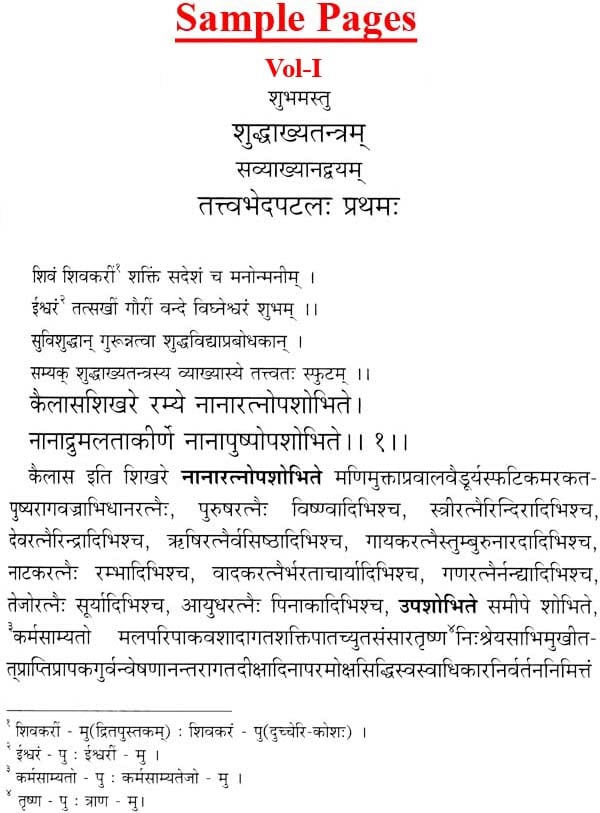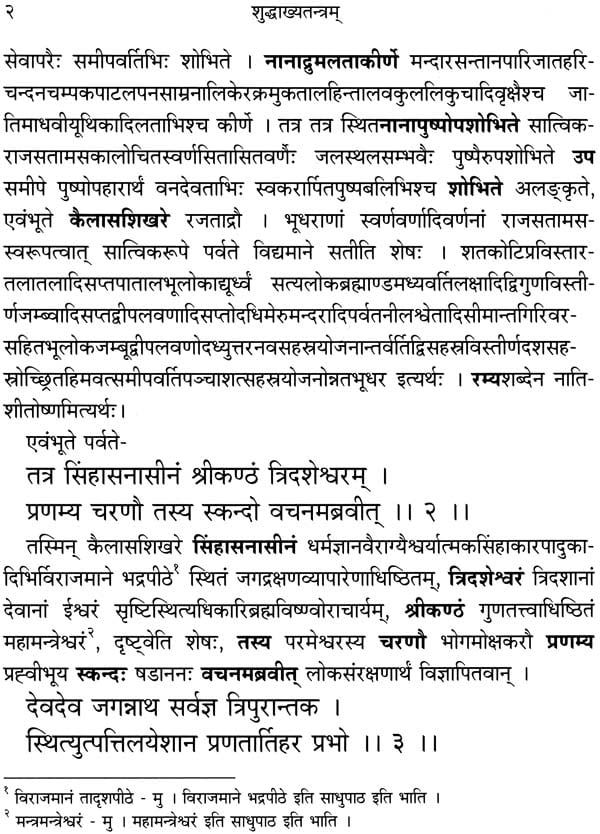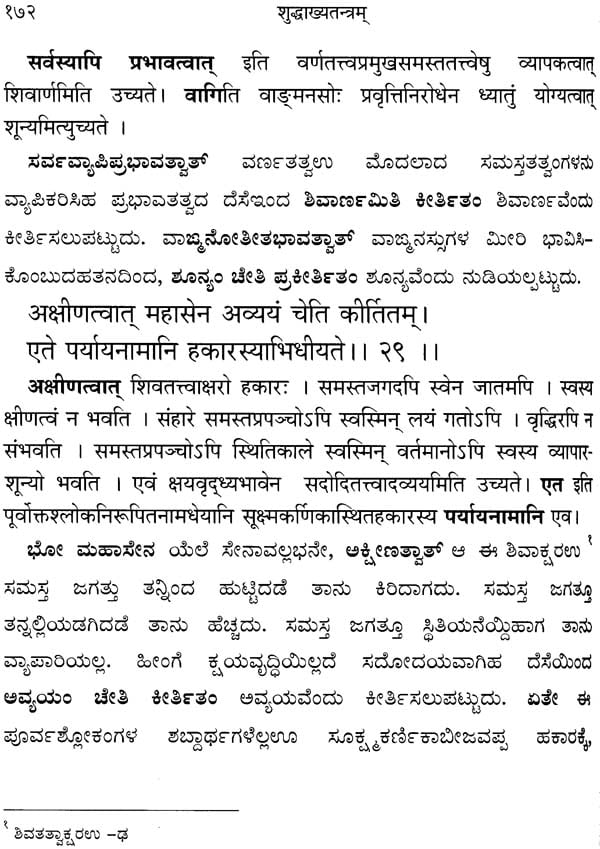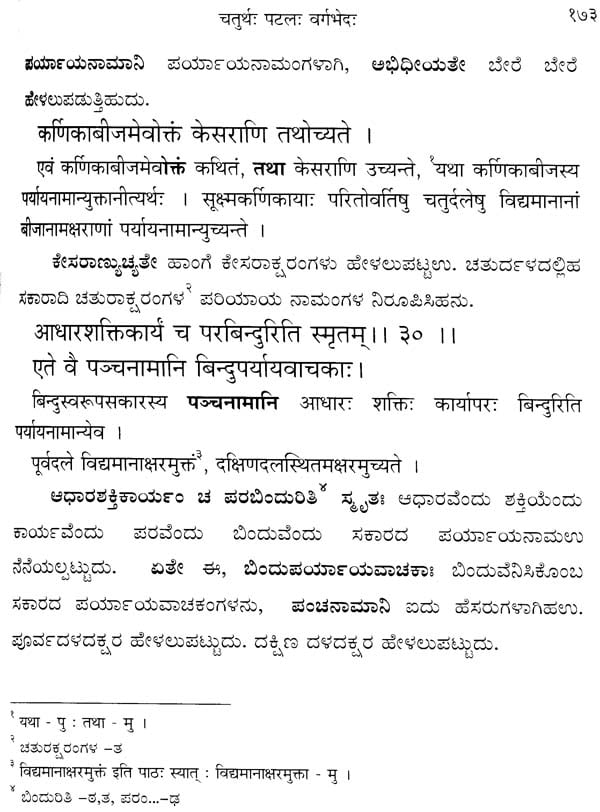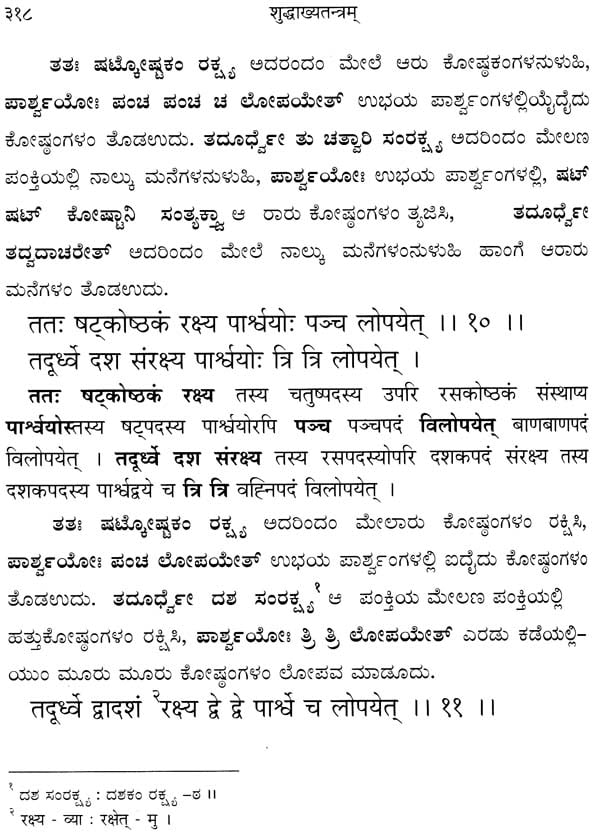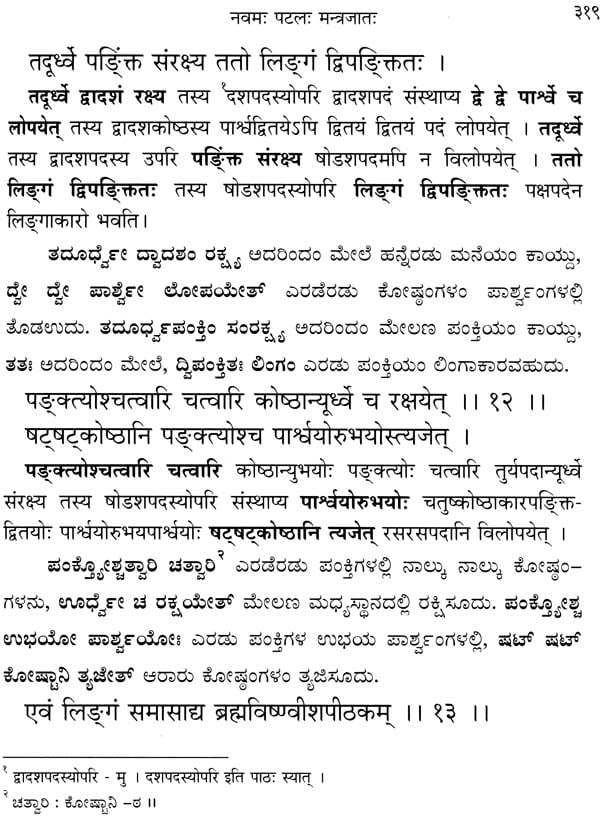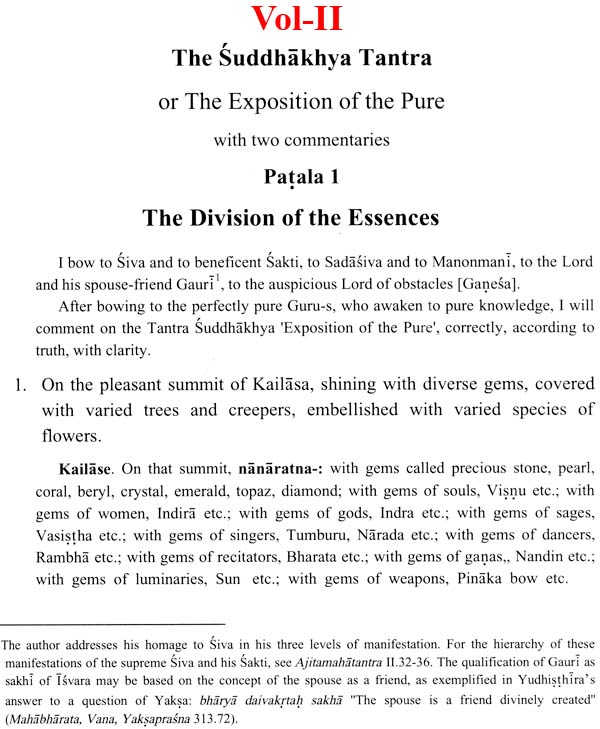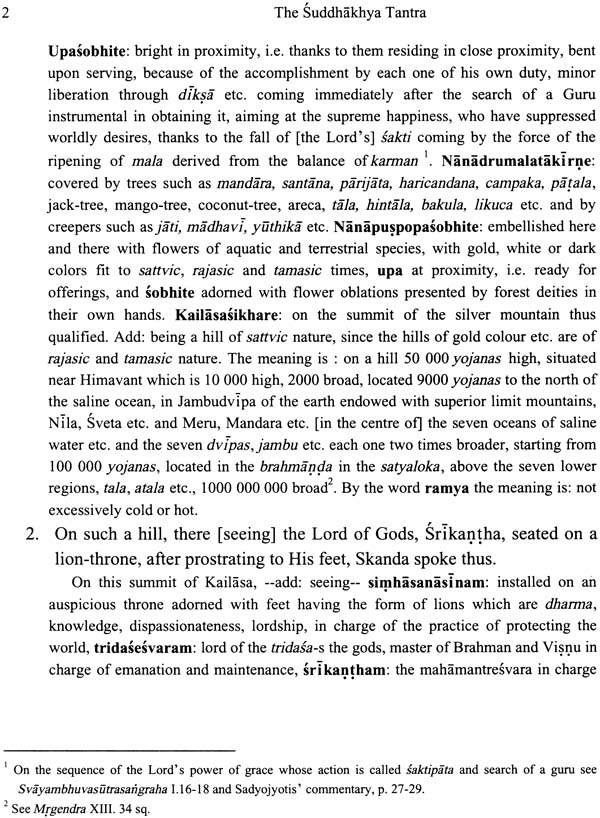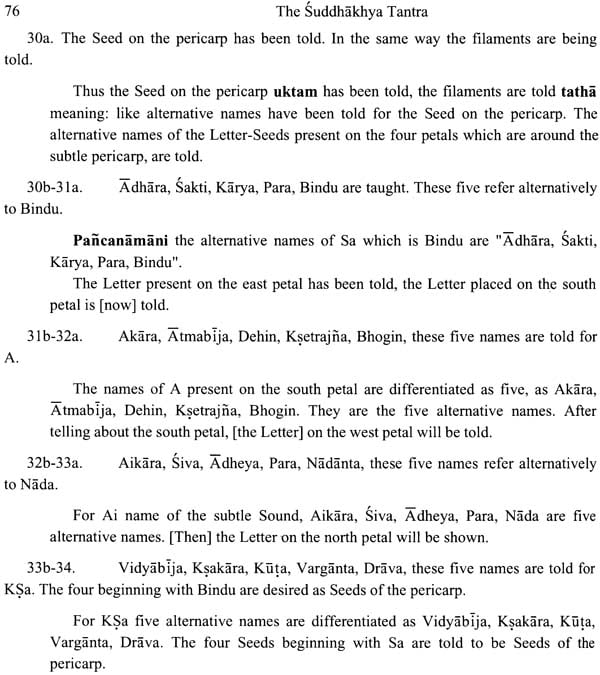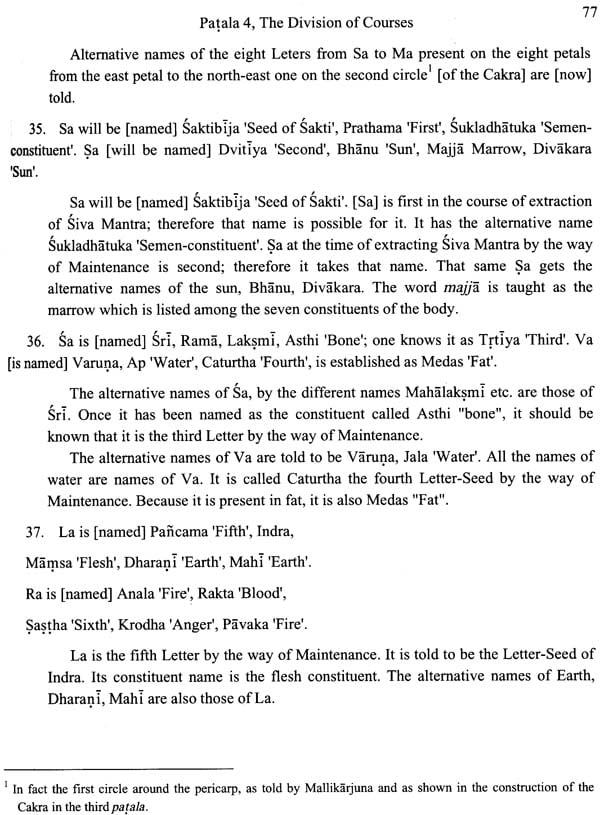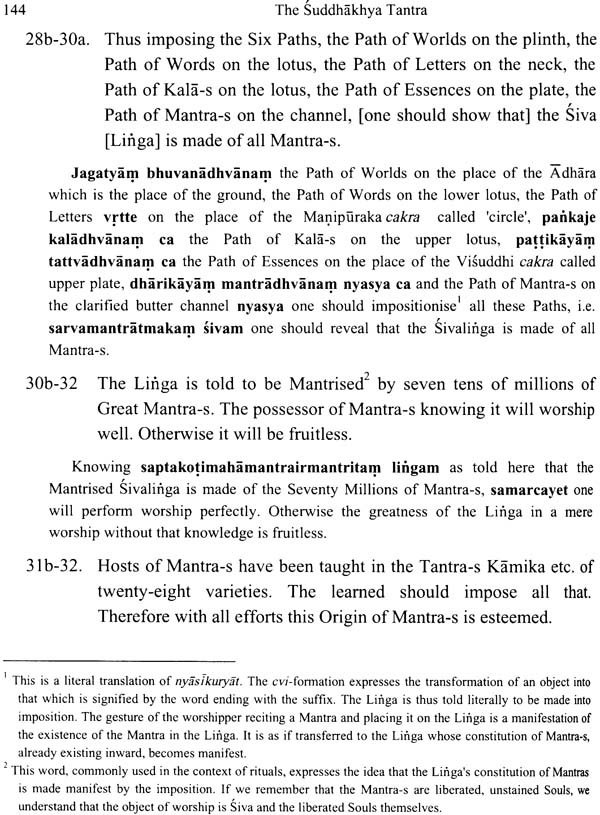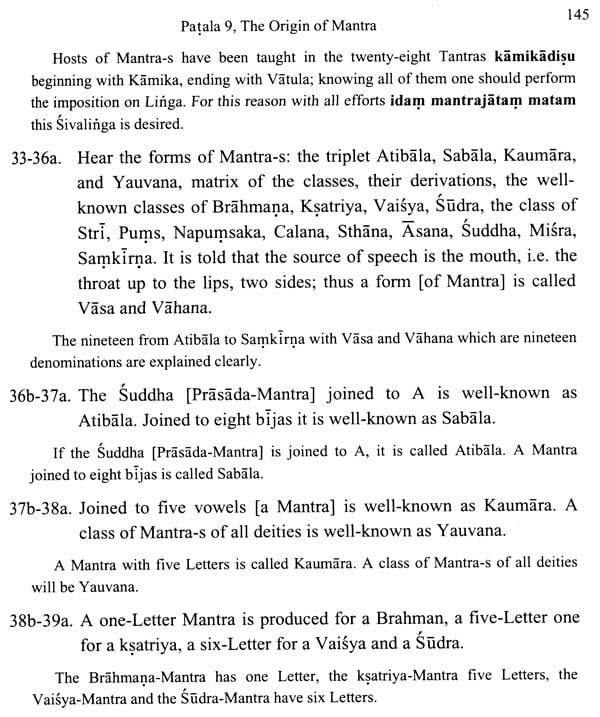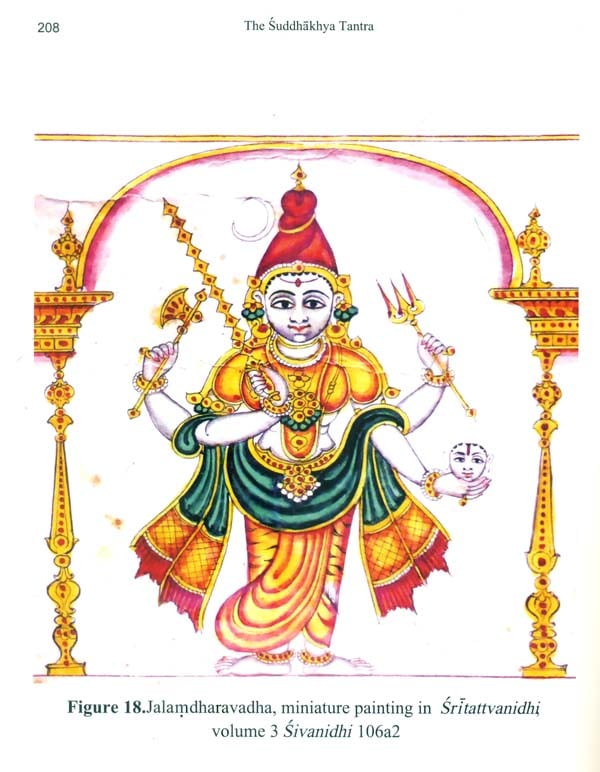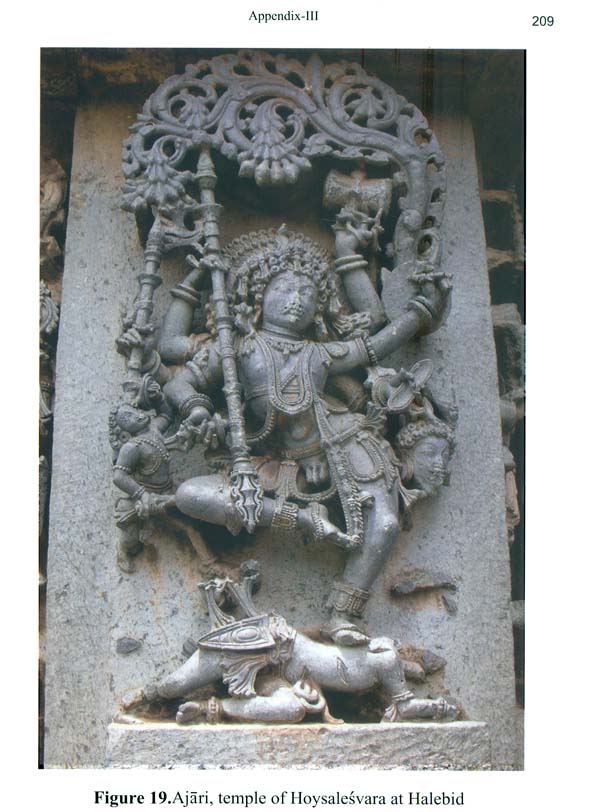
वातुलशुद्धाख्यतन्त्रम्: The Vatula Suddhakhya Tantra - The Exposition of the Pure With Two Commentaries (Set of 2 Volumes)
Book Specification
| Item Code: | NAO544 |
| Author: | Manjunath Bhat and Suryanarayana N. Bhat |
| Publisher: | Indira Gandhi National Centre for the Arts, New Delhi |
| Language: | Sanskrit, Kannada and English |
| Edition: | 2018 |
| ISBN: | Vol-I: 9789380935836 Vol-II: 9789380935881 |
| Pages: | 674 (28 Color Illustrations) |
| Cover: | Hardcover |
| Other Details | 10.0 inch X 7.5 inch |
| Weight | 1.90 kg |
Book Description
Vatula-Suddhakhya Tantra is an ancillary text of Vatula Tantra, which is one of the twenty-eight fundamental manuals of the worship of diva. Its special subject is the art of forming Mantra-s from the letters of the Sanskrit alphabet. A complex ritual is conducted to endow the letters and their combinations with a sacred value. The letters are made into bra--s "seeds" containing a deity in unmanifest form. A Mantra is comprised of a "seed" and a name of the god, i.e., his manifest and unmanifest forms. The sacred character of the Mantra is attended by a secret code of exposition. It is explained and clarified in details through two commentaries in Sanskrit and in Kannada, probably authored by one and same scholar, Mallikarjuna Acarya of Gubbi (Tumkur District, Karnataka). The present book offers for the first time a study of the concept of Saiva Mantra-s, a critical edition, an English translation with notes and illustrations in the form of sculptures and paintings.
Dr. Suryanarayana N. Bhat has received the traditional formation of Sanskrit Pandits and is well-versed in the modern methods of research. He has authored many books in the field of Mimamsa, Vedanta and Tantra litteratures.
Dr. Manjunath Bhat, lecturer in Bangalore Sanskrit University, has a traditional and modern formation. His expertise is in Mimamsa and Tantra Sastra-s.
Prof. Pierre-Sylvain Filliozat, emeritus professor of Sanskrit in Paris University, Member of Institute de France (Academic des inscriptions et belles-lettres), has conducted research in diverse branches of Indology with specialization in Vyakarana and Tantra literatures. He has authored books and articles about Sanskrit Literature and temple architecture of South India.
Dr. Vasundhara Kavali-Filliozat is an independent researcher in the field of history of Karnataka, Kannada epigraphy and literature, temple art and iconography, emphasizing the study of Hampi, Calukyan epigraphy and art. She has authored many books and articles in English, French and Kannada.
The Indira Gandhi National Centre for the Arts (IGNCA) through its long term research and publication series, Kalamulaiastra, aims at bringing to light the primary textual source material which remains unknown, unpublished or inaccessible hitherto, both in the original language as also in translation. Under the aegis of this programme, the publication of the fundamental texts of Indian arts is undertaken along with annotations and translations. The critical edition of each text is prepared on the basis of several manuscripts, those being collated, transcribed etc. along with the commentary of the source material available, either in Sanskrit or in regional languages, if any. This series is an attempt to rewrite the intellectual as well as the cultural history of India.
The ambit of this series is vast and it touches upon almost all the traditional knowledge systems pertaining to Indian arts. Right from dealing with, and publishing, several texts from Vedic corpus like, Asvalayana Samhita of Rgveda, Latyayana and Baudhayana Srauta sutras, Agamic texts like Svayambhuva Sutra Samgraha and Ajitagama (both Siddhanta saivagamas), Isvarasamhita (Pancaratra Vaisnavagama) and Manthana Bhairava Tantra (Kubjika saktagama) to Vastu, silpa and Sangita texts such as Mayamatam, siparatnakola and silpaprakasa, Brhaddesi, Caturdancif-prakffnik5 etc., have also been undertaken in this series.
The present work titled the Viftthauddhalchya Tantra is another value addition in the stream of Siddhanta saiva literature. This is an upagama (ancillary text) of the Vatula Tantra, which is one of the twenty-eight muligamas (fundamental manuals) of Siddhanta Saivism. The text assumes an important place in the saivagamic literature because it elucidates the art of forming mantras from the letters of the Sanskrit alphabet. This highly esoteric text dealing with such a sophisticated ritual process of composing the bija (seed) mantras is ably complemented by two commentaries, one in Sanskrit and the other in Kannada.
The Suddhakhya Tantra is an ancillary of the Vatula Tantra, the last in the consecrated list of twenty-eight Tantra-s of the pan-Indian school of §aivasiddhanta. Its subject-matter is the nature and making of Saiva Mantra-s. It claims to be "the essence of the essence" of the teachings of the cardinal scripture. This is another way to say that Mantra-s constitute the quintessence of the religion. Constructing and reciting Mantra-s in the service of a god is a very elaborate art, elevated to the rank of a religious rite and this is held as the core of the religion. The Suddhalchya Tantra is to be read at several levels. Firstly, it is the technical description of the rites for construction of Mantra-s from their letter material. Then, it classifies Mantra-s very systematically in the frame of the theological concept of Siva with a relevant and very original method.
There are three modes of approach to the deity; first, its essence under the technical name of tattva, then its manifestation in a material body called murti, and finally the relation between these two called bhava. The essence of Siva is pure consciousness, defined as the universal power of knowledge and action. It incurs several levels of manifestation in material forms or bodies. Rites of installation and worship of images bring a relation of identity between the abstract supreme Siva and his concrete manifestations. The Mantra is treated by the same method and approached with the same modes. The essence of the Mantra is the universal consciousness of a superior, liberated soul, similar to Siva. Its body is a proper name made of material speech. Identity relates the body of speech to the soul. The Mantra is made of letters. The letter is approached by the same method. Its essence is an abstract entity held as a bija, a "Seed-Letter".
containing potentially a deity. It has a body of sound utterable by the human vocal apparatus. And the sound becomes the "Letter-Seed". With such a frame of thought and devices of reflexion appropriate to Tantric literature, the Suddhalchya Tantra expounds in four preparatory chapters the concept of Siva, the letter, a Cakra "wheel", i. e. a graphic device giving a global picture of concerned deities and letters, and three courses or orders of sequence of the letters. This determines a code for naming letters. In the subsequent five chapters the different processes of construction of Mantra-s, letter by letter, are prescribed. The final chapter is a presentation of the different categories of worshippers and users of Mantra-s.
Judging from the number of manuscripts, this Tantra has enjoyed popularity among §aiva worshippers, especially in Karnataka. Two commentaries have been composed in Sanskrit and in Kannada, possibly by the same author, Mallikarjuna of the 15th century A. D. There have been several printed editions of the basic texts, two for the Kannada commentary, one in grantha script for the Sanskrit. None appeared to be satisfactory from a historical point of view. The text of the Sanskrit commentary was abysmally corrupt, both in the sole manuscript available to us and in the printed book. A new edition, accompanied by an English translation appeared necessary to arrive at a better understanding. The S'uddhahya Tantra is a difficult text by its purely abstract and complex subject-matter, by its technical terminology, and by its Tantric language very often disrespectful of grammar. The corrupt state of the Sanskrit commentary added one more difficulty.
However, considering the elevation of the thought underlying this text, considering its importance for the understanding of §aiva religion and observing its high popularity, an attempt at restoring and translating it has been made by a small team of researchers. Like the whole of the immense Tantric or Agamic literature, it is quite relevant to the Kalamalaiastra Series undertaken by the Indira Gandhi National Centre for the Arts (IGNCA), with the conviction that all Indian arts, which include rituals, chanting of Mantra-s etc., have their deepest inspiration in Tantra-s.
The starting point of this work was our initial connection with the Indira Gandhi National Centre for the Arts, some twenty years ago, when Suryanarayana N. Bhat began the collation of manuscripts of the Kannada commentary on the Suddhikhya Tantra. The idea was to explore and collect documentation about religious life in the temples of Karnataka, in the line of the Saivagama project conducted in the French Institute of Pondicherry, which is a parent of the vast inquiry undertaken by IGNCA. The basic text of the Aiddhakhya Tantra was accessible through several printed editions. However, the two known commentaries were available only through very unsatisfactory editions. Considering that the pratika-s of the basic text present in the commentaries of the 15th century were the oldest testimonies on the form of the Suddlialchya Tantra, and since the manuscripts are more recent copies, we undertook an edition of the Tantra on the sole basis of the readings known to the commentaries. The project was readily accepted by Prof. Satkari Mukhopadhyaya and the support of IGNCA was granted to us by Dr. Kapila Vatsyayan. We express our highest gratitude to both of them.
Suryanarayana Bhat completed the collation of the manuscripts of the Kannada commentary available at the Oriental Research Institute of Mysore and prepared the first draft of a new edition with a critical apparatus including all variant readings, without any actualisation of the medieval Kannada. We express our gratitude to him for the utmost care with which he has prepared this edition, the first to provide an authentic image of the worked of the medieval author.
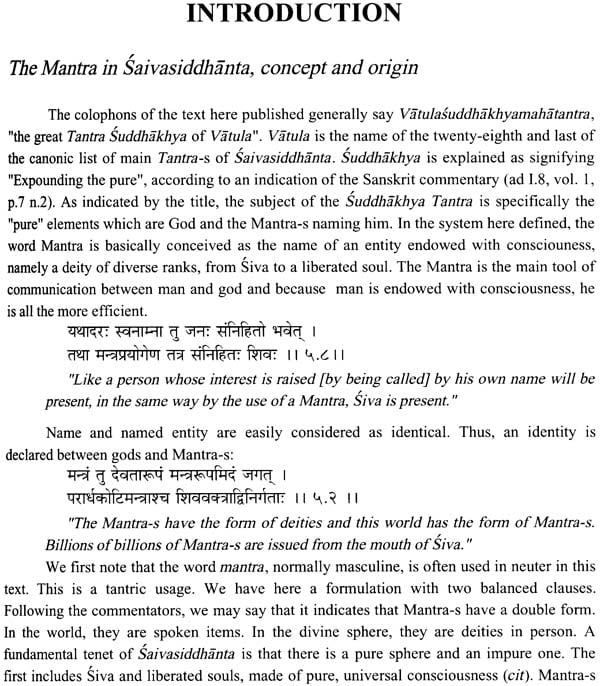
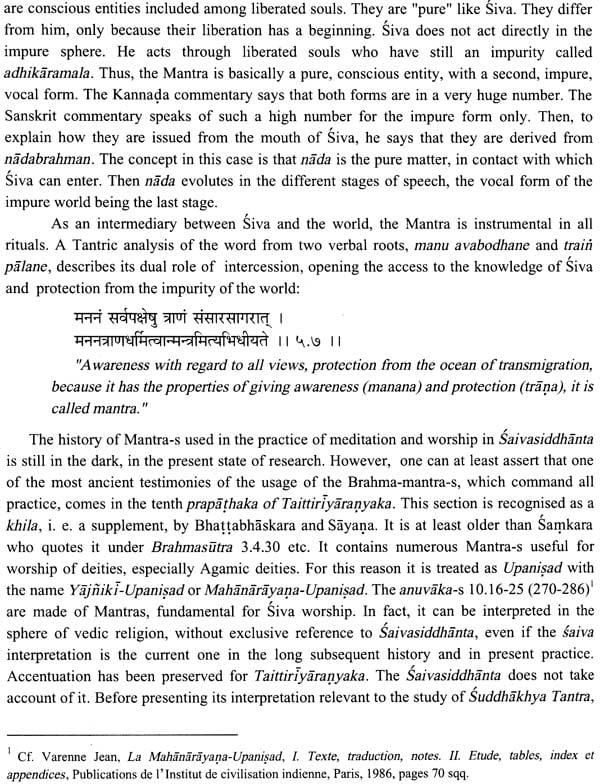
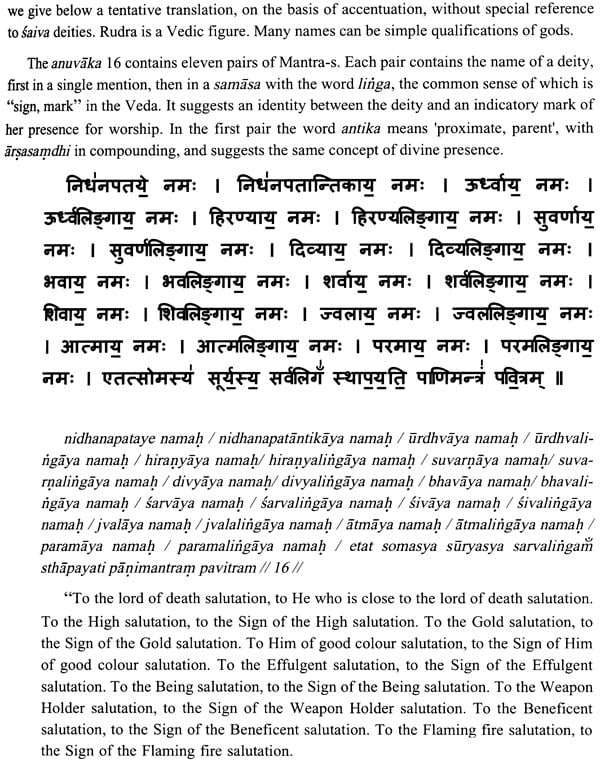
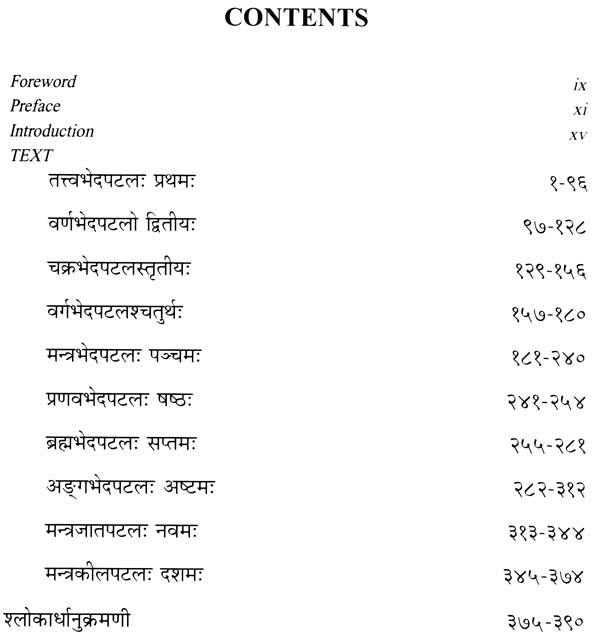
| English Translation | |
| English Translation | |
| Patala I The Division of Essences | 1-42 |
| Patala II the Division of Letters | 43-56 |
| Patala III The Division of Cakra | 57-68 |
| Patala IV The Division of Courses | 69-79 |
| Patala V The Division of Mantra | 80-105 |
| Patala VI The Division of Pranava | 106-111 |
| Patala VII The Division of Brahma [-Mantra] | 112-122 |
| Patala VIII The Division of anga | 123-134 |
| Patala IX The Origin of Mantra | 149-155 |
| Patala X The Division of Mantrakila | 149-155 |
| Appendix-I (Extra Verses from the Kannada Commentary | 157-164 |
| Not Available in Sanskrit Sources | |
| Appendix-II Tattvabhedapatalah (Charts) | 165-187 |
| Appendix-III (Illustrations) | 191-221 |
| Quoted Works | 223-226 |
| General Index | 227-231 |
